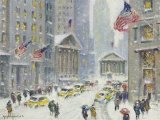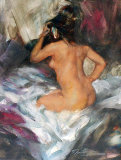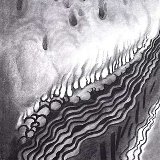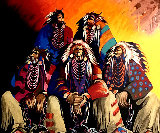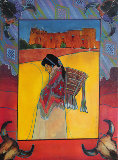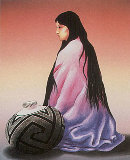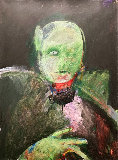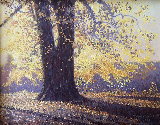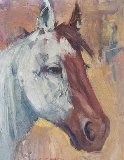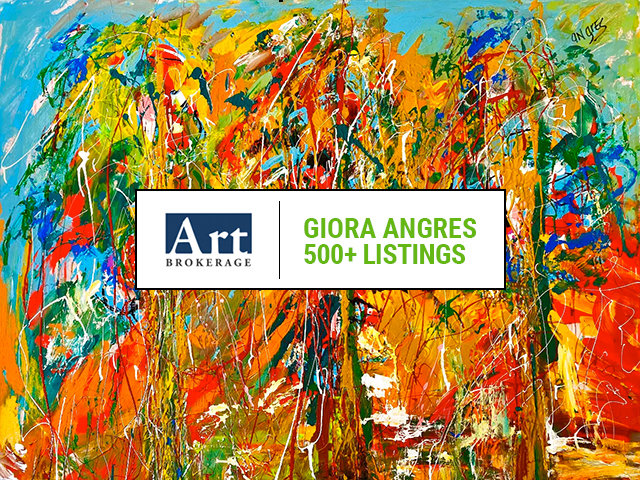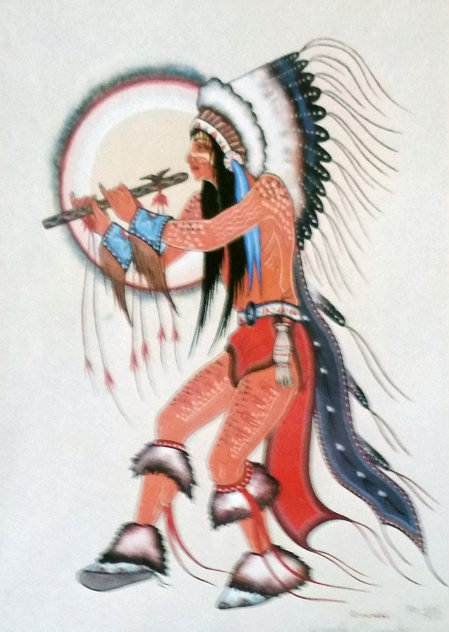








Flute Dancer
Woody Crumbo
Limited Edition Print : Silkscreen
Size : 11.75x8.5 in | 30x22 cm
Framed : 15x18 in | 38x46 cm
Edition : From the edition of 750
Hand SignedLower Left in Pen
Condition Excellent
Framed with GlassSilver Metal
Purchased fromPrivate Collector 2007
Provenance / HistoryPurchased from a Private Collector in Scottsdale, AZ
Certificate of AuthenticityArt Brokerage
LID95066
Woody Crumbo - United States
Art Brokerage: Woody Crumbo American Artist: b. 1912-1989. Woodrow Wilson "Woody" Crumbo (January 21, 1912—April 4, 1989) (Potawatomi) was an artist, flautist, and dancer who lived and worked mostly in the West of the United States. As an independent prospector in New Mexico in the late 1950s, he found one of the largest beryllium veins in the nation, valued at millions of dollars. His paintings are held by several major museums, including the Smithsonian Institution and the Metropolitan Museum of Art, with a large collection at the Thomas Gilcrease Institute in Tulsa, Oklahoma. Crumbo was a 1978 inductee into the Oklahoma Hall of Fame for his paintings. He was appointed as an "ambassador of good will" for Oklahoma in 1982 by Governor George Nigh. While studying art, Crumbo supported himself as a Native American dancer. He toured reservations across the United States in the early 1930s disseminating and collecting traditional dances. His art career was affirmed when his teacher from the Chilocco Indian School sold a number of his paintings to the San Francisco Museum of Art. Subsequently, Crumbo joined the Bacone College in Muskogee as Director of Art from 1938-1941, succeeding Acee Blue Eagle. In 1939, the U. S. Department of the Interior, which includes the Bureau of Indian Affairs as one of its constituent agencies, commissioned him to paint murals on the walls of its building in Washington D. C. A few years later he curated a collection of Native American art at the Thomas Gilcrease Institute in Tulsa. Crumbo's "peyote bird" design became the logo for the Gilcrease Museum. From 1948 to 1960, Crumbo lived in Taos, New Mexico.He exhibited at numerous shows and became more widely known both nationally and internationally because he adapted some of his work to techniques of engraving and printing, making multiple originals. With his first interest as art, Crumbo served as Assistant Director of the El Paso, Texas Museum of Art from 1960–1967 and briefly as Director in 1968. He left to work independently at art and explore humanitarian efforts. He aided the Ysleta Pueblo Indians of New Mexico to gain federal recognition and donated money to help the Potawatomi build a cultural heritage center near Shawnee. In 1973 he took up residence near Checotah, Oklahoma, where he continued to create and to promote Native American art. In 1978, he was inducted into the Oklahoma Hall of Fame.

